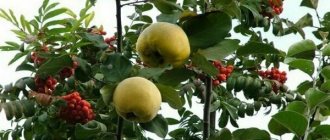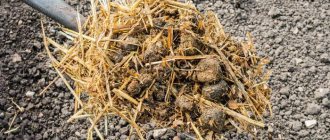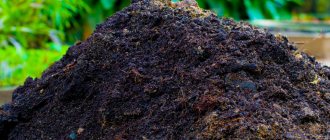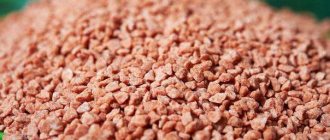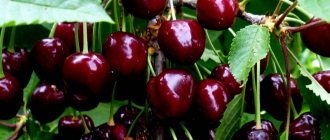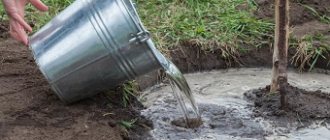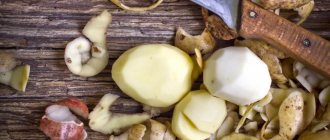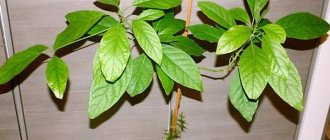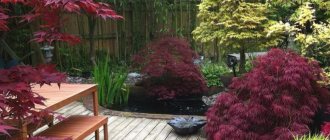Can it be used?
Straw has always been used, starting from those ancient times when they had never heard of other fertilizers. However, this natural raw material has both advantages and disadvantages.
Advantages
- Does not require additional capital investment.
- More pleasant to use than manure.
- Contains many organic substances, vitamins, amino acids.
- Improves the structure of the soil, loosening it and making it water- and breathable.
- Does not require special storage conditions.
- Saturates the soil with carbon, creating favorable conditions for plant photosynthesis.
- Helps retain moisture in the soil.
- The use of several types of straw can completely restore depleted soil.
- As a mulch, it protects plants from burning and suppresses the growth of weeds.
Strawberries at home all year round! These veneers are 100 times better than false teeth! And they cost pennies! Up to 15 kg of strawberries every month! Dental veneers for pennies! Up to 15 kg of strawberries every month! The famous overlay veneers are now in Russia!
Flaws
- Often contains pest larvae, which will then impair the growth and development of cultivated plants.
- Insufficiently decomposed raw materials cause damage to the root system of plants because they release harmful acids.
- Overheating of raw materials requires additional moisture.
- Beneficial substances do not enter the soil immediately, but after 2-4 years.
In terms of organic matter content, straw is several times higher than conventional manure.
To mitigate the negative aspects of this organic matter, it must be added annually, immediately after harvesting, not forgetting about the dosage. If you add nitrogen, peat or black soil to dry material, the rate of overheating will increase by 35%.
What kind of straw is suitable for fertilizing?
Straw from cereal or legume varieties is suitable for fertilizing the soil. It consists of dried plant stems, with a brittle tubular structure, and should also have exclusively yellowish and brownish shades without green inclusions or obvious fungal or mold growths.
Dried stems of cereal crops
The most preferred straw is for fertilizing legumes. It decomposes faster and contains fewer pathogens and pests that can negatively affect the quality of the soil and the planned harvest.
Beneficial features
Straw contains a huge amount of useful elements. Getting into the soil in a volume of 6 tons, it supplies it with nitrogen (25 kg), phosphorus (5 kg), potassium (75 kg), calcium (14 kg), magnesium (4 kg). But for it to have time to enrich the soil with all these elements, time must pass - over 8 months.
As it decomposes, it forms humus, which forms the beneficial properties of the soil. To speed up decomposition, it is customary to add mineral nitrogen. If this is neglected, the soil will lose a lot of useful substances.
Dry organic matter also affects the structure of the soil - it loosens it when overheated. The soil becomes softer, creating comfortable conditions for the growth of garden crops.
Straw prevents erosion. The autumn burial of this raw material helps to improve air exchange and increase the absorption properties of the soil. Straw mulch laid between the rows will save you from the dominance of weeds.
The straw of legumes and cereals is especially valued. The only limitation is that dried shoots of plants with a fungal coating or manifestations of other diseases are not suitable for fertilizer.
Legume straw quickly decomposes, is less susceptible to diseases, and is not liked by pests.
Different straw – different nutritional set of elements
If we compare cereals and legumes in terms of the amount of nitrogen, then legume residues will contain three times more of it. There are many nitrogen components in buckwheat and corn residues.
Sunflower stems contain the most phosphorus. Less in cereal straw. Therefore, to balance nutrients, you can combine raw materials, grinding them into identical particles.
Potassium content also varies depending on the variety. Winter cereals have about 1 mg/kg of this substance. In sunflower up to 5 mg/kg. 2.5 mg of potassium in buckwheat stubble.
Video: Turn straw into a rich harvest
There is more calcium in pea tops and sunflower stems. If you mix wood ash with straw and embed it in the soil, the acid-base balance can be significantly balanced.
Magnesium, which takes part in the formation of chlorophyll, is most abundant in corn, peas and sunflowers.
How to cook?
Straw is harvested both manually and using special equipment. The last method applies to large volumes. Gardeners prefer not to plant cereal crops on their plots, but to collect the remains in the fields.
Methods of application
- Dry
The easiest way to use it is by burying it in the ground in early autumn. But it has one drawback - dependence on the amount of precipitation. If there is little rain, the straw will not begin to rot. Accordingly, next season this area will not yet be suitable for planting.
- In compost
Use as a component of a compost heap. Mixed with plant residues, manure, ash, and minerals, straw will decompose perfectly and have a stimulating effect on the course of microbiological processes.
For a standard compost heap, first prepare a place, and then begin to lay the biomaterial in layers:
- The straw is placed at the very bottom, the approximate volume is 150 kg. It is advisable to pre-grind it.
- The second layer is weeds or just grass (20 kg).
- The biomaterial is poured on top with a mineral solution: 6000 g of superphosphate, 4000 g of nitrate, 6000 g of potassium chloride are taken per 40 liters of water.
A compost heap needs at least a year to rot. Then the contents are mixed and you can begin to use the most valuable organic fertilizer.
- In the form of ash
Straw ash is the most valuable in terms of potassium content (30%), which is why many gardeners rush to burn it. Almost all crops are sprinkled with it. Dosage – up to 70 g per meter.
Buckwheat and sunflower trunk are famous for a similar composition. However, straw ash is low in calcium, and therefore it is better to mix it with wood ash.
Using straw as biofuel.
The straw is covered with a thin layer of soil in which the seedlings are planted. After six to seven weeks, when the straw begins to intensely generate heat, the roots of the plants will reach the straw and begin to grow into it.
Straw bales are placed in shallow ditches 0.6-0.7 meters wide so that the edge of the bale is slightly above ground level. The bales are watered with a hose, being careful not to get water behind them.
Then chicken manure is added; 100 kg of straw requires 5 kg of manure. Chicken droppings contain both minerals and bacteria, which cause the straw to heat up quickly and evenly.
Chicken droppings are evenly scattered on the surface of the straw shafts, and then watered several times with slurry or just water. The straw rolls must be kept wet at all times, because only then will the straw heat up.
After 3 days the temperature in the straw bales will increase, and after a week it will reach almost 50°C) and will begin to subside. By the tenth to fifteenth day, the temperature will drop to 30°C, ammonia will no longer be released - you can plant the seedlings in prepared straw.
To do this, use a sharp stick to make holes in the bales for the root ball and place the plants in them. After a few days, they begin feeding the plants with solutions of mineral fertilizers. This method provides high yields with less fertilizer and water consumption.
Fertilizer for the garden
In the soil, it first breaks down into proteins and carbohydrate compounds, and only then into cellulose and lysine. This process goes faster if a powerful catalyst – nitrogen – is added to the soil. Therefore, it is always better to combine the application of straw with the use of this mineral raw material. The optimal dosage is 15 kg of nitrogen per 1000 kg of straw.
Some gardeners also add a third component - manure, to make the fertilizer even more nutritious and rich in minerals. In addition, manure enhances the decomposition of biomaterials by increasing the activity of microorganisms.
Thanks to the introduction of nitrogen, the straw overheats faster and releases useful substances to the soil.
Before you start adding dry matter to the soil, it should be thoroughly crushed. The maximum size of the straws is 16 cm, the minimum is 9 cm. In addition, it is recommended to first add nitrogen (urea or saltpeter). Dosage – 100 kg per hectare. Laying dry stems is done to a depth of 13 cm. The straw overheats slowly, and therefore you need to wait a while with deep digging.
Straw is usually used as an organic fertilizer for potatoes and corn, beets and turnips, zucchini and carrots, watermelon and pumpkin.
Excellent results can be achieved through combined use with green manure. First, dry biomaterial is buried, and mustard, for example, is sown on top. All this gives the soil several sources of natural organic matter. Green manure provides additional mineralization, which will have a positive effect on future harvests.
Note. The combination of two types of organic matter significantly increases the yield of winter crops.
A vegetable garden under straw is the ideal solution. Discussion on LiveInternet
Over time, any, even the most fertile soils lose their qualities, and in order to replenish them with the minerals and nutrients necessary for crop growth, various types of fertilizers are periodically applied. They can be artificial or natural.
Innovative technologies: organic soil fertilization
Artificial are chemical compounds that can affect the biological purity of the resulting product. That is why natural fertilizers are increasingly used on farms and farms. These include: manure, compost, silage, stems of cereals and legumes, ash, etc.
Each of them has its own advantages regarding the composition of minerals and other useful elements, as well as in terms of ease of application to soils and accessibility. Straw has been used as fertilizer for several decades.
And there are all reasons for this, which are undeniable advantages.
Straw and fertilizer - where is the connection?
Agronomists working with grain crops know: straw as a fertilizer is an excellent residual material for feeding the soil. In the fall, it is plowed up when digging up personal plots, and is used as one of the components for preparing mulch and compost.
Inexperienced farmers practice burning straw in their fields. This action causes irreparable damage to the fertile surface. The soil temperature reaches extremely high levels, destroying worms, woodlice, and loosening the soil cover.
Smoke after combustion is equivalent in its impact on the environment to emissions of harmful substances at industrial enterprises.
It is more effective to use straw as an organic fertilizer: compared to manure, it is 4 times more economical.
The action is cumulative: it will take about 8 months to get results. Straw contains phosphorus, magnesium, potassium, calcium, and nitrogen. The last component accelerates the process of decay and the formation of humus, which increases productivity. Its ratio to carbon should be 20:1.
Introducing straw into the soil performs the following functions:
- increases soil fertility and structure;
- provides food for ground insects;
- activates nitrogen fixers;
- reduces soil erosion;
- improves soil absorption of water and air.
Straw protects the soil from pests, from icing in winter, prevents it from overheating, and also adds looseness and lightness to the soil due to the presence of carbon dioxide.
Dry organic matter helps get rid of weeds and can be used in garden beds by gardeners in the summer.
Is straw in the garden beneficial or harmful – Cottage, garden, vegetable garden, indoor plants
To mulch or not to mulch – that is the question. Let's look at the pros and cons of different types of mulch for your garden.
Mulching can easily be called a global gardening trend. The idea of covering beds with various agricultural materials was taken from wildlife. Just remember an untouched forest: trees and shrubs are securely “wrapped” in a soft blanket of fallen leaves and pine needles.
Mulch is often mistakenly viewed as a panacea for all garden ills: it will protect plants from drought, free the owner from weeding, and improve the quality of the soil. It would seem like a complete benefit! However, not all mulch is good for your garden, especially in excessive quantities. Let's look at the types of mulch and its purpose.
The best mulch
Mulch useful for the garden should perform the following functions:
- retain moisture;
- stabilize the soil and prevent its erosion;
- inhibit the growth of weeds (serving as an alternative to chemical herbicides);
- increase biological activity in the soil (being a breeding ground for microorganisms);
- enrich the soil with minerals (due to slow decomposition);
- improve the soil structure over time (if used correctly);
- Ideally, it should have an attractive appearance and not violate the integrity of the landscape design of your site.
What makes a good mulch? In fact, there are enough options to suit every taste and budget.
Conifer bark
Pine and larch bark is ideal for use as mulch. This is a natural, environmentally friendly material that decomposes well, promotes soil drainage, making it more moisture- and breathable.
In addition, it has a noble dark color that does not lose saturation under the influence of rain and sun. It is easy to find on sale, and it costs quite reasonable money.
Suitable for mulching tree trunks and shrubs, as well as beds and flower beds.
Soil improver
The mixture to improve soil quality may include peat, sapropel, crushed conifer bark, etc. It can be used not only “internally” – when preparing the soil for planting, but also “externally” – as mulch. The soil improver is good for mulching beds and flower beds.
Straw
Some gardeners do not use straw as mulch, fearing that it will begin to rot. Yes, it does retain moisture, but it only begins to rot in the greenhouse. The soil, covered with a straw cover, becomes loose, “breathes” well, and does not require frequent watering even in dry summers. You can forget about hoes and cultivators!
Straw can be used to cover berry and vegetable beds. During heavy rains, the straw layer will protect the fruits from contact with the ground, and therefore from rotting. But it’s better not to overdo it with shrubs: if you lay the straw in too dense a layer, this will slow down the growth of young shoots.
Straw that has served as mulch is perfect for composting.
Conifer needles
It’s hard to think of a more “natural” type of mulch than fallen pine needles. If pine or spruce trees grow on your site, consider yourself very lucky!
However, there is one important nuance: green pine needles cannot be used to mulch young, actively growing plants. “Fresh” needles contain terpene, which inhibits the development of sprouts.
But brown needles no longer contain this chemical, so they are absolutely safe.
Green needles can be used for mulching crops that love acidic soil, but only during the flowering and fruiting period.
Green needles will protect plants from invasion of slugs and snails.
fallen leaves
How much effort we put into the fall to clear the garden of fallen leaves... But in vain! Foliage is an excellent winter “coat” for perennials. In addition, leaf cover protects the soil from drying out and erosion and promotes the breeding of earthworms.
Next time you find yourself in the forest, try lifting a layer of fallen leaves - the ground underneath is alive in the full sense of the word.
Gravel
Of course, small pebbles do not increase the biological activity of the soil, but they are indispensable in rainy areas, as they protect the soil from washing out. Plus, gravel mulch will last you for years! A very profitable investment.
Ground cover plants
What about living mulch? This is not only good for the soil, but also beautiful! To save time, effort and money, choose perennial ground cover plants: ivy, creeping thyme (popularly known as thyme), etc.
Source: https://IrkAgro.ru/drugoe/mulchirovanie-solomoj-2.html
Straw instead of soil
Innovative gardeners use straw both as fertilizer and as soil. Thus, there is positive experience of growing potatoes in a layer of straw. This method does not require hilling, weeding, watering, fertilizing, or removing pests. Dry organic matter does everything: retains moisture, nourishes plants with all the substances necessary for growth, blocks the growth of weeds, and repels Colorado potato beetles.
The planting technology is as follows: peat is poured onto the bed (layer height is within 25 cm), potatoes are laid in any order, and covered with straw. They take it up to 35 cm. That's all. At the end of summer all that remains is to harvest. If it is very dry, it is better to water the potatoes a couple of times.
Note. Potatoes grown using this method are usually large, even, clean and very productive.
Is straw in the garden good or bad?
In the process of using land for growing vegetables and grains, the soil is depleted in a short period. It needs to be nourished with trace elements, minerals, and beneficial elements. Straw is a natural product with multifaceted effects.
Description and properties
Straw is the dried stem of various crops. It looks like a tube with an empty middle, is distinguished by its golden color and the absence of remains of rot, mold and mildew. Common crops for straw production are legumes and cereals.
Wheat
Wheat contains iodine, manganese, magnesium and iron, sodium and cobalt, carotene, vitamins D, group B. These elements are useful for the root system, trunk, and grain.
Barley
Barley is rich in fiber, calcium, lysine, protein, a lot of extracts, vitamins A, PP.
Oatmeal
Contains a lot of cobalt, iron, carotene, protein. Beneficial substances are absorbed into plants when they are fertilized with organic oats.
Pea
Dry vine contains a large amount of lysine, protein, trace elements and vitamins, antioxidants. Rots quickly compared to other species.
Straw influence
The effect of straw on the soil and plants varies.
On the ground
It has a beneficial effect on the land: it becomes fertile and produces a rich harvest of pumpkins, potatoes, melons, corn, beets, and carrots. A good result is observed when used in combination with green manure grown for further digging and planting of winter crops. For this purpose, mustard and radish are used.
When decomposing, dry stems form protein compounds and simple carbohydrates, cellulose, and lysine. Nitrogen acts as an accelerator of decay, so it is effective to add fertilizer based on this element to a dry stem. Dosage – 10 kg per ton of material.
For plants
Straw decomposition products have a negative impact on plantings. The root system suffers when exposed to the following acids:
- vinegar;
- formic;
- dairy;
- sorrel;
- benzoin, etc.
When nitrogen is introduced they are neutralized. An effective replacement is urea or saltpeter. The input is carried out in the proportion of 150 g per 1 m2.
Methods of application
The use of straw as fertilizer must be strictly controlled. A positive result is achieved only if the dosage is correct.
Straw beds
Agronomists practice growing vegetables in straw, using it as soil. The method is characterized by the absence of the need for weeding, watering, hilling, fertilizing, pest control (Colorado beetles, etc.), making the cultivation of vegetable crops economically less expensive. Straw retains moisture, fertilizes crops, and prevents the appearance of weeds.
This method is most popular when growing potatoes. Planting begins with pouring peat into a trench 0.25 m deep, randomly scattering tubers and then covering the cultivated area with a 35 cm layer of straw. If there is insufficient rain, it is necessary to water 1-2 times. With this approach, a rich harvest in the fall will delight gardeners: the tubers will be smooth, unspoilt, and tasty.
Forming a bed and repelling rodents from it is carried out according to the following algorithm:
- Spread cardboard, paper, newspapers.
- Pour out wood ash (others are not suitable) at the rate of 1 bucket per 5 m2.
- Lay the straw bales tightly, without gaps.
- Water for 3 days, thoroughly saturating the structure with water.
- In the next 4 days, water with herbal infusion.
- Next, moisten the soil with compost tea for three days.
- After the specified period, cover the bed loosely with film for air circulation and leave “windows”. After 10 days, plant the plants.
An alternative method for using dry grass as a bed:
- dig a trench up to half a meter deep;
- lay out a layer of straw;
- sprinkle with earth.
The considered method is suitable for growing strawberries, cucumbers, tomatoes, and peppers.
Straw mulch
- protection from ground freezing in winter, drought in summer;
- preventing the appearance of large weeds;
- bait of beneficial insects.
The soil becomes light, airy, and optimally moist.
The disadvantage of using mulch is that it reduces the nitrogen content of the soil, which leads to nitrogen starvation. You can get out of the situation by using fertilizer based on this element.
Spring is the optimal time for mulching. It is better to plant seedlings that tolerate cold soil well: potatoes, cabbage, strawberries.
Fertilizing is carried out by scattering straw in the shape of a ball with a diameter of 15 cm. After a certain period of time, the layer will decrease to 4 cm.
The second option is mixing with rotten leaves, compost, and various organic matter. On dense clay soil, you need to spread the mulch in a thin layer of 1-2 cm. Add the next ball every day for two weeks.
Source: https://paronyms.ru/info/soloma-na-ogorode-polza-ili-vred/
Mulching with straw
Straw has become widely used as an excellent mulching material. It covers the beds in the winter to protect them from frost, in the spring to avoid burns, in the summer to protect them from overheating and to maintain optimal soil moisture.
In addition, mulch stops or blocks the normal growth of weeds. Mulching helps increase the amount of organic matter in the soil. The soil becomes looser and airier. Under the influence of sunlight, the earth is deprived of many useful elements, and straw mulch prevents this.
Basic application errors
Some gardeners make many mistakes when mulching:
- Mulching is carried out in the greenhouse. In this case, this agricultural technique does not always provide the desired results, since not all organic materials can be used in protected soil. The greenhouse is always hot and humid. In addition, air circulates poorly in it. As a result, the straw begins to rot and become covered with fungi. This causes the development of dangerous pathologies.
- Do not combine straw mulching with nitrogen fertilizers. The fact is that this natural material removes nitrogen from the soil. Deficiency of this element negatively affects the growth of cultivated plants. To avoid this, before mulching, the soil must be watered with infusion of manure. It is also permissible to use urea.
- Mulching is carried out in early spring, immediately after planting the seed material. This procedure negatively affects the process of sprouting and crop development. Only fully heated soil is allowed to mulch. Otherwise, there is a high probability of delayed cultural development. However, there are certain exceptions to the rules. So, potatoes need to be mulched immediately after planting.
- Cover heavy soil with a thick layer of straw. In this case, the lower part of the mulch begins to rot. On clay soil you need to place chopped straw in a layer of up to 2 centimeters. Afterwards, you should add material at intervals of 2 weeks.
Mulching with straw is considered an effective procedure that helps maintain optimal soil moisture and prevent the active growth of weeds. It is important to follow the recommendations of experienced gardeners.
Mistakes gardeners make when incorporating plant residues into the soil
According to the rules for using straw in the garden, it is crushed to particles up to 5 cm in size. This makes it possible to achieve rapid decomposition, therefore, the release of nutrients into the root growth zone. When embedding large or solid particles, the process slows down several times.
If the cereals were not grown on their own plot, but were collected in the fields, then it is necessary to pay attention to whether the straw is infected with a fungus. It will appear as a gray or black coating.
In this case, the raw materials cannot be used - fungal spores will infect the area and the cultivated plants will become sick. In this regard, it is preferable to introduce the remains of leguminous plants into the soil - they are more resistant to the effects of the fungus.
Preparation of straw ash can also be considered a mistake if the dry raw materials are not infected with diseases. The fact is that when you burn straw in your garden, the top layer of soil is exposed to high temperatures and all microorganisms in it die. Question: who will process organic matter? During combustion, valuable nitrogen and carbon evaporate, which depletes the soil.
How and when to apply to the soil
If you have to burn straw, then you need to do it in an iron barrel, and then take it out to the garden and be sure to dig it up. In this case, the ground must be moist.
To speed up the decomposition process, it is recommended to mix saltpeter with the straw - 15 kg of nitrogen fertilizers per ton of stubble. If possible, then in the fall they add manure, which already contains active microorganisms and ammonia, so this fertilizer for plants will definitely be beneficial.
It is best to add organic matter in the fall, but you need to monitor the amount of precipitation. If there are few of them, you will need to water the area before frost to start the decomposition process. By the way, it is similar to the one that occurs when burning in a compost heap.
Disadvantages of the method
However, this method has its negative sides, which should be studied before using a straw bale instead of the usual beds.
More expensive than the traditional method
Unlike the usual method of soil cultivation, purchasing bales requires financial costs. It is recommended to purchase the material in the fall and store it in a dry place to prevent mold from appearing. It is also necessary to carefully ensure that the material is not damaged by pests.
The beds need to be updated annually
The bale is suitable for planting only for one season. In the future, the material should be replaced with a new one, since after contact with water, the straw begins to rot and disintegrate.

